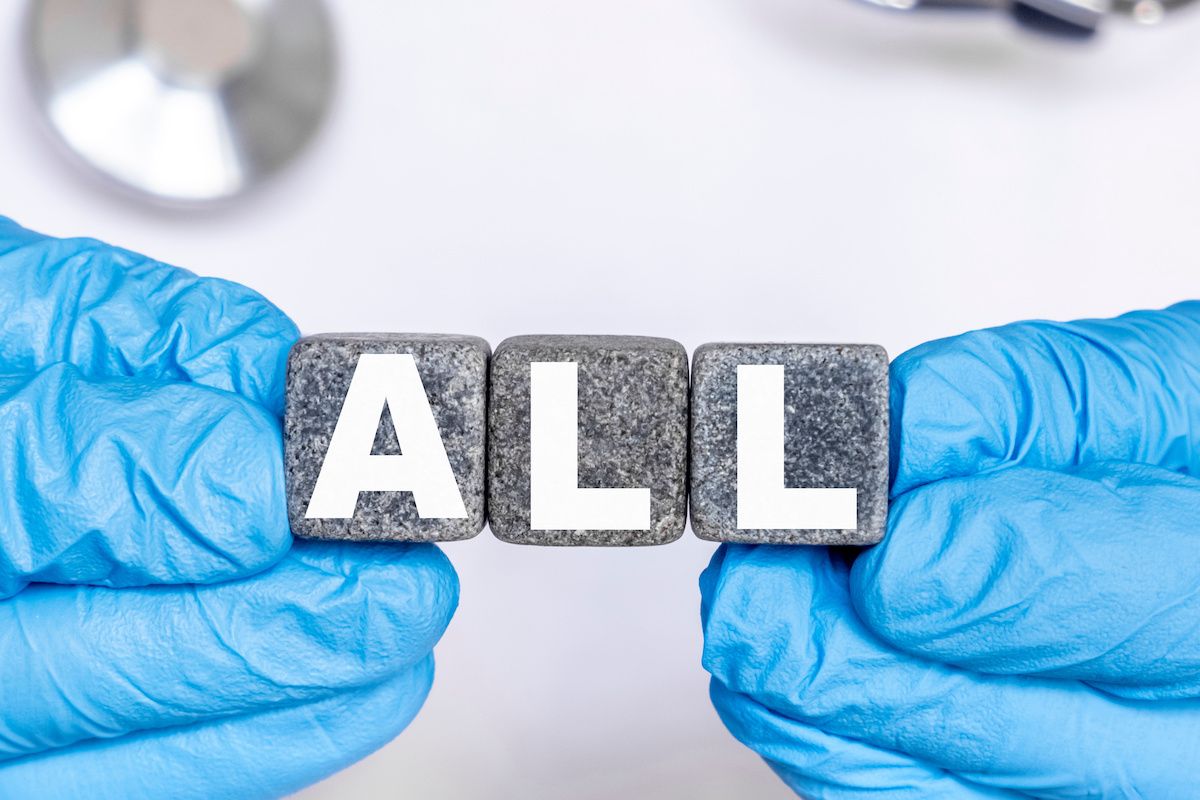- Center on Health Equity & Access
- Clinical
- Health Care Cost
- Health Care Delivery
- Insurance
- Policy
- Technology
- Value-Based Care
Obe-Cel Outcomes by Age; Brexu-Cel Expansion as a Predictor of Relapse-Free Survival in R/R ALL
Obecabtagene autoleucel (obe-cel) is shown to be effective and safe for older adults with relapsed/refractory (R/R) B-cell acute lymphoblastic leukemia (ALL), while brexucabtagene autoleucel's (brexu-cel) expansion predicts durable remission.
Novel therapies, including chimeric antigen receptor (CAR) T cell, have represented an important advancement in treatment for patients with relapsed/refractory (R/R) B-cell acute lymphoblastic leukemia (ALL). However, CAR T-cell therapy comes with some common and serious adverse effects, such as cytokine release syndrome (CRS) and immune effector cell–associated neurotoxicity syndrome (ICANS).
Research focused on the efficacy and safety of obe-cel across different age groups, and another explored brexu-cel as a consolidation treatment.
Image credit: Sviatlana - stock.adobe.com

Research presented at the American Society of Clinical Oncology annual meeting focused on the efficacy and safety of obecabtagene autoleucel (obe-cel) across different age groups, and another explored brexucabtagene autoleucel (brexu-cel) as a consolidation treatment.1,2 The findings underscore the progress being made to deliver effective and manageable therapeutic options for R/R ALL and highlight the potential for broader applicability of CAR T-cell therapies, including in older adult populations.
Obe-Cel in Older Adults
A post hoc analysis of the phase 1b/2 FELIX trial (NCT04404660) evaluated the efficacy, safety, and persistence outcomes of obe-cel based on patient age (< 55 years vs ≥ 55 years).1 A total of 127 patients were infused with obe-cel; 62.2% were younger than 55 years (median age, 36.0 years) and 37.8% were 55 years or older (median age, 65.0 years).
Patients younger than 55 years had higher proportions who were Hispanic/Latino (36.7% vs 18.8%), had extramedullary disease at lymphodepletion (29.1% vs 8.3%), had received prior blinatumomab (53.2% vs 22.9%), and had received prior inotuzumab ozogamicin (35.4% vs 25.0%). However, the older age group had a higher proportion of patients with Philadelphia chromosome–positive disease (47.9% vs 16.5%), and the median bone marrow blast burden at lymphodepletion was higher in the older age group.
At the median follow-up of 21.5 months, the overall remission rate was 72.2% in the younger group compared with 87.5% in the older group. Similar rates of responders who had at least 1 postinfusion next-generation sequencing achieved measurable residual disease (MRD) negativity by month 3 (84.2% of those < 55 years and 83.3% of those ≥ 55 years). Similarly, event-free survival was comparable at 14.3 months for the younger group and 11.7 months for the older group. CAR T-cell persistence was similar between the groups.
Grade 3 or higher CRS occurred in 2.5% and 2.1% of patients younger than 55 years and 55 years or older, respectively. ICANS occurred in 5.1% of the younger group and 10.4% in the older group.
“These findings indicate that obe-cel is effective and has a positive benefit/risk profile regardless of age, including in older adults with R/R [B-cell] ALL..." the researchers concluded.
Brexu-cel CAR T Expansion in Patients With Low Marrow Blasts
Among patients with low marrow blast burden (< 5%), there was successful CAR T-cell expansion after treatment with brexu-cel, and it was possible to identify patients likely to have a durable relapse-free survival (RFS).2
The study, conducted at MD Anderson Cancer Center, included 46 patients being treated with brexu-cel outside of clinical trials. All of the patients had marrow blasts less than 5% and no evidence of extramedullary disease at the time of lymphodepletion. The majority (76%) of patients were MRD negative. At a median of 8 days after infusion, patients reached postinfusion peak CAR T expansion, with the median peak expansion being 13.5 cells/µL.
The researchers found 15 cells/µL was the peak CAR T expansion threshold to be an optimal predictor for RFS. Half of the patients reached a peak CAR T expansion of at least 15 cells/µL, and the median peak CAR T expansion for the 10 patients who were MRD positive at the time of infusion was 77.5 cells/µL, and 7 of the 10 had a peak expansion of at least 15 cells/µL. The median peak expansion for patients who were MRD negative at the time of infusion was 10 cells/µL, with 44% achieving a peak expansion of at least 15 cells/µL.
Among the patients who reached a peak expansion of at least 15 cells/µL, 91% remained alive in remission. Among the 23 patients whose peak expansion was less than 15 cells/µL, 65% were alive in remission. The 12-month RFS for all 46 patients was 71%, with a higher RFS for patients with peak expansion of at least 15 cells/µL (86%) compared with expansion less than 15 cells/µL (58%).
References
1. Shah B, Yallop D, Jabbour E, et al. Efficacy and safety outcomes of obecabtagene autoleucel (obe-cel) stratified by age in patients (pts) with relapsed/refractory B-cell acute lymphoblastic leukemia (R/R B-ALL). Presented at: ASCO 2025; May 30-June 3, 2025; Chicago, IL. Abstract 6576.
2. Khaire N, Jabbour E, Short N, et al. Brexucabtagene autoleucel (brexu-cel) as consolidation treatment in adults with B-cell acute lymphoblastic leukemia. Presented at: ASCO 2025; May 30-June 3, 2025; Chicago, IL. Abstract 6543.
Zanubrutinib Shows Similar Efficacy but Better Safety Than VEN–I in Frontline CLL
November 26th 2025The analysis found that zanubrutinib provides similar progression-free survival to fixed-duration venetoclax plus ibrutinib but with consistently fewer serious side effects, suggesting a more favorable overall safety profile.
Read More
